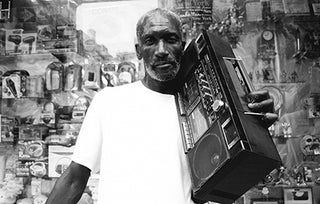With legions of artists claiming to master their craft for “themselves” – all while making sure that someone hears them say it – David Rivera actually manages to keep his head hidden under his work and behind his lens. You’ll understand the next-level puns that were just made as you read on. But even without owning a rabbit’s foot, I somehow got lucky enough to talk to him about his new solo photo exhibit, “Quiet,” currently exhibiting at the streetwear retail boutique eTc Tacoma in Washington.
Coming in on his fourth year at The Hundreds, David has stuck his hand in just about every cookie jar available. “I went from photography to visual communications to being a designer,” he explained, just plainly enough to it wouldn’t be misconstrued as a boast. But if anyone deserves a little boasting – it’s David. He was the only intern of three to not get fired on the first day. He’s since turned a self-education into a full-time career, and a hobby to his first photo show – all while giving credit to some sort of God of Coincidental Luck.
But coincidence and luck don’t just lead everyday people to where David is now. The only thing strong enough to accomplish that is a strong sense of individuality and patient love for his craft. When everyone’s sprinting the same route at the same speed with their eyes on the finish line, they often blur together to the point where the only one left standing out is the one walking – and enjoying every pebble their feet kick along the way.
If David could be summed up in one sentence it would go something like – “If I throw a penny in a fountain, I don’t do it so people know I threw the penny – I just want the penny to be in the fountain.” And it’s right out in front of The Hundreds’ Homebase, under a dark sky an hour ahead of schedule, that the humble headwear designer and photographer lent me his eyes.
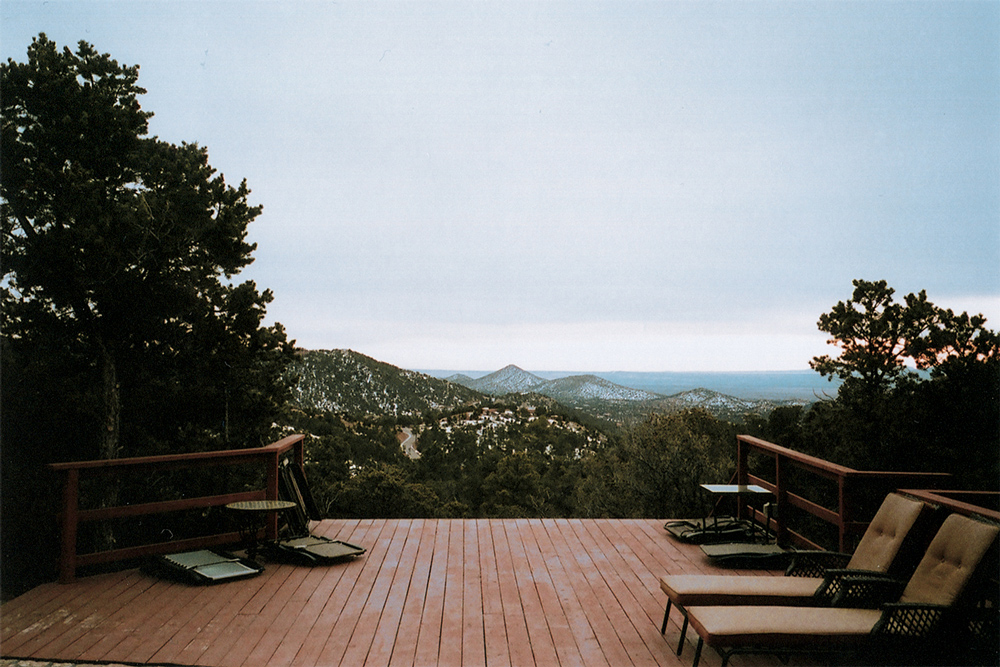
Where are you from? How did you start? Why am I talking to you? All these things.
DAVID RIVERA: I’m based out of Los Angeles. I picked up my camera at a young age – my stepdad bought me one. He just gave it to me like, “Hey, do you want to learn?” “Yeah.” “Alright, teach yourself.” And he just gave it to me.
How’d you go about doing that?
I practiced and researched. Google was a very good friend of mine, I was very close to that person. [Laughs]
Google was there for a lot. I would just learn the lighting and stuff, and if I got stuck somewhere I would just look it up. I never really hit the library – I was more digital era. Self-taught on everything – photography and design.
I started with landscape. That’s how I learned how to use light – what time to shoot, what time’s best to shoot. I was in high school then, so I would ask friends, “Hey, you want to go shoot? Let’s go walk around in the mountains or something.” And we would do that and [shoot] mainly landscapes with a person in it. And eventually it started zooming in more to the person and eventually it just became portraits.
So little by little I started loving portraits. I would start inviting over friends, I’d have a studio set in my garage or in my bedroom, I had the lighting set up, I moved my bed onto the wall and have like eight friends come through. I’d shoot them separately or I’d start going to shows a little bit more and after the shows, I’d meet up with the artists and shoot them. Portraits just started building and I was like, “Oh shit, I love portraits.”
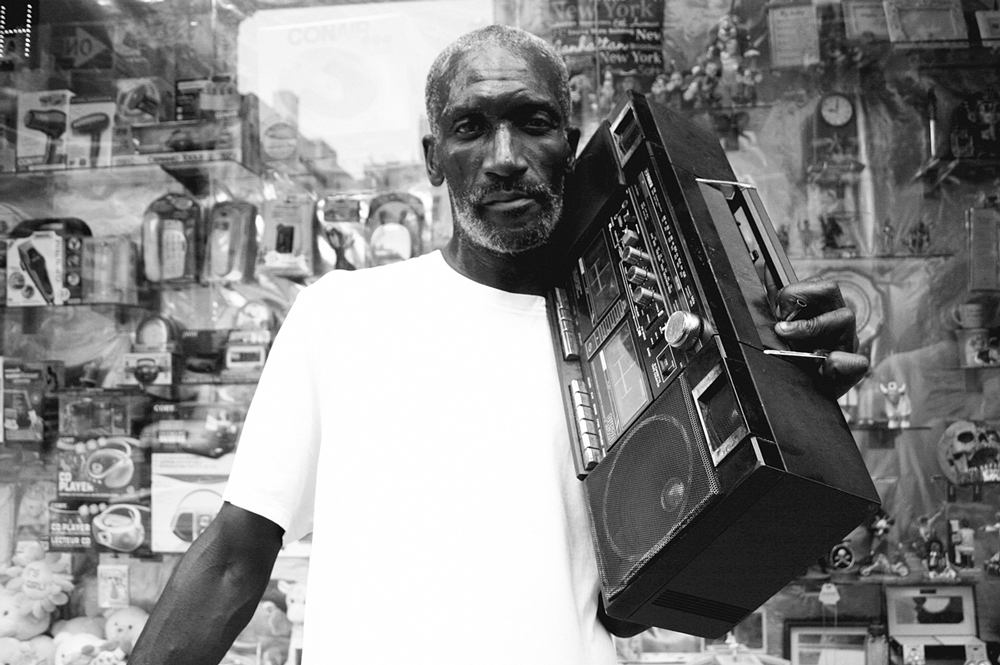
What is it about portraits?
Everyone looks different. Everyone’s dressed different, everyone looks different… Nothing crazy, I don’t have a crazy story, none of that. I just like people.
Has your design career given you special opportunities to get photos of shit you never would’ve otherwise?
Yes. I’ve met certain people I never thought I would. I shot them, and I got lucky.
Okay, someone puts a gun to your head and says, “Photo or design?”
I’ll die. I’d rather get shot. I can’t choose. A lot of the reason why I’m a designer now is because of photography. I picked up a camera first before I even started designing. I started shooting a couple friends in the industry that I designed for. And little by little, I got hired on as a [VC] – I knew my shit in Illustrator and Indesign and all that stuff that I needed to know. People trusted me with the taste of what I was trying to portray, so when I got hired here for photos, eventually they just threw me into design. They trusted me and ran with it. Ever since that.
So I went from photography to visual communications to being a designer. I was doing all the product shots for Switch. That’s how I got hired – I was an intern for Switch. On the very first day I interned there were three interns. He fired two of them [that first day]… I ran that for about a year and eventually they needed help in headwear in accessories, I decided to help out, and eventually [became the headwear and accessories designer].
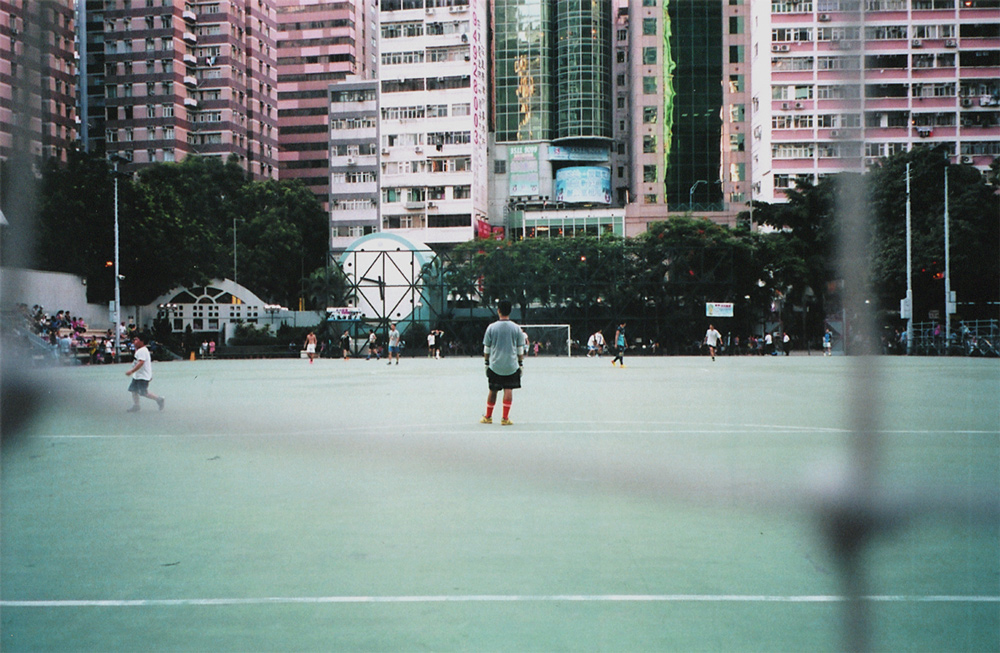
What’s the link there with photo and design? Because they’re similar.
It’s just something I love a lot; both things. I can shoot and design forever and I’d be perfectly happy. Design gives you a more broad perspective – it’s more broad, you can design whatever you want. And if you showcase it and people like it, then they do, if not I still have fun doing it… I’ve made anything from an air freshener to a basketball to backpacks to carabiners. You can make furniture – that’s what I love about design. And you can always make it better. There’s always somehow, some way – someone’s going to beat you, so you have a chance to do it better. I hate that, but it’s so true. Someone’s going to beat you, so you just have to make it better.
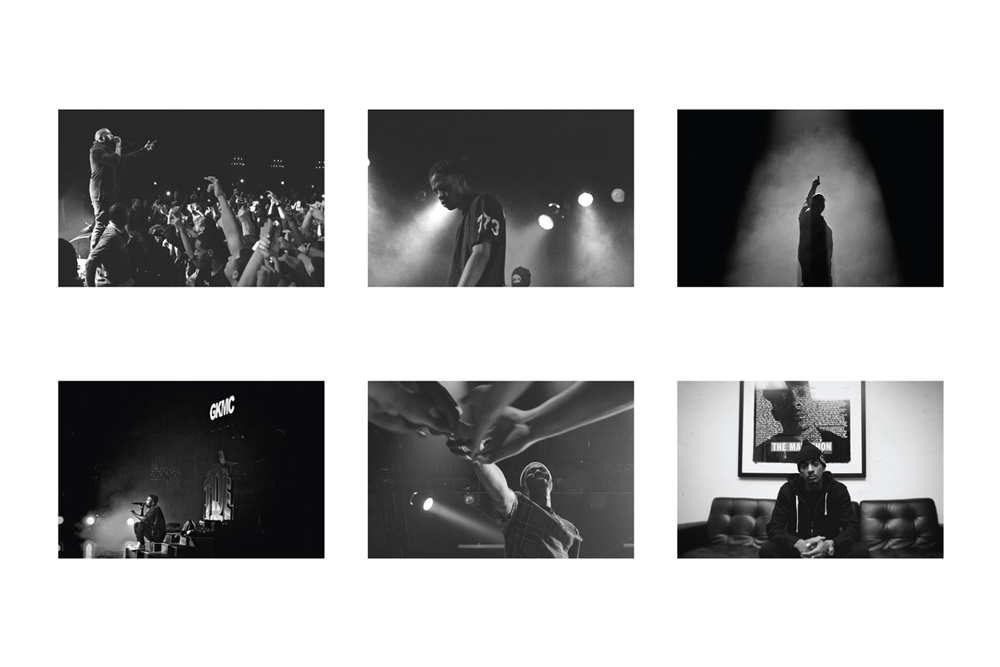
Do you incorporate your design into your photography?
I try to keep it separate. Stuff that I learned in design helped me with photography when it comes to composition and the way I want to set things up. Photography’s helped me with attaining a certain eye for design. They go well with each other.
Just the eye, you have the eye.
My favorite part of photography is everyone has their own eye. Everyone right now, lately, has been saying, “Oh, photography’s gone to shit lately because there’s a digital era! Everyone ruined it, everyone’s a photographer now.” And that’s true, it’s easier, but at the end of the day if your work is great, you’ll get noticed. You can have a better camera than I have, but if I have the better eye, I’m going to beat you. That’s why I love photography.
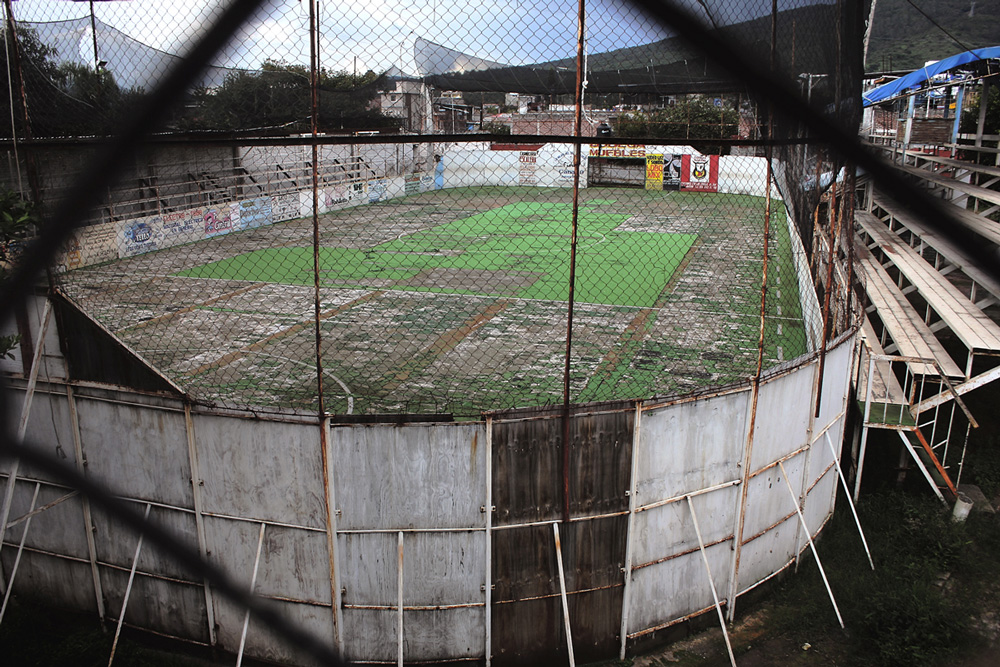
How’d you even get a show? Where do you begin getting a show?
To be honest, I didn’t expect to do one ever. Maybe not for another ten years. Umi was always hitting me up like, “Hey, let’s do a show at my shop.” He recently just left [Los Angeles] and opened up a shop a couple months ago [in Washington]. He actually gets a lot of love out there, it’s so tight. So much love out there.
One day he hit me up and he was like, “Yo, let’s have a show, let’s have a show.” I asked him, “Hey, are you ready for the show?” At this point I was just kidding and he said, “No, let’s do it next month.” I said, “Really?” He’s like, “Yeah, let’s do it, I have the perfect time.” He gave me the date and we were like, “Alright, let’s do it.”
I tried to find who could help me out with the prints; I found that, a good friend of mine. I needed a sponsor to help me out a little bit; that was another good friend of mine. I just got lucky with the relationships that I’ve built.
So this was your first show? Is it scary? Is it intimidating?
No, not at all.
Pure excitement?
Not even excitement! [Laughs] It was like I was planning a to-do list in a different city: “Oh, I should probably just send you all my photos so you can look at them.” And, “Oh, I should probably order these frames so I can send them there.” Then step by step it started coming together and I didn’t feel the excitement until I actually got to Washington – to Tacoma. I walk into the store and my frames and photos were ready to be put together and I was like, “Oh, shit, I’m really doing this.” So I got excited once I got there.
It wasn’t a scary process. I wasn’t worried about inviting people – I wanted it to be something small and intimate. If you could come, then come, if you couldn’t then it’s fine. I feel like it was just something for me and Umi to do together as friends and if people come and see it, then that [meant] people liked it and that’s tight.
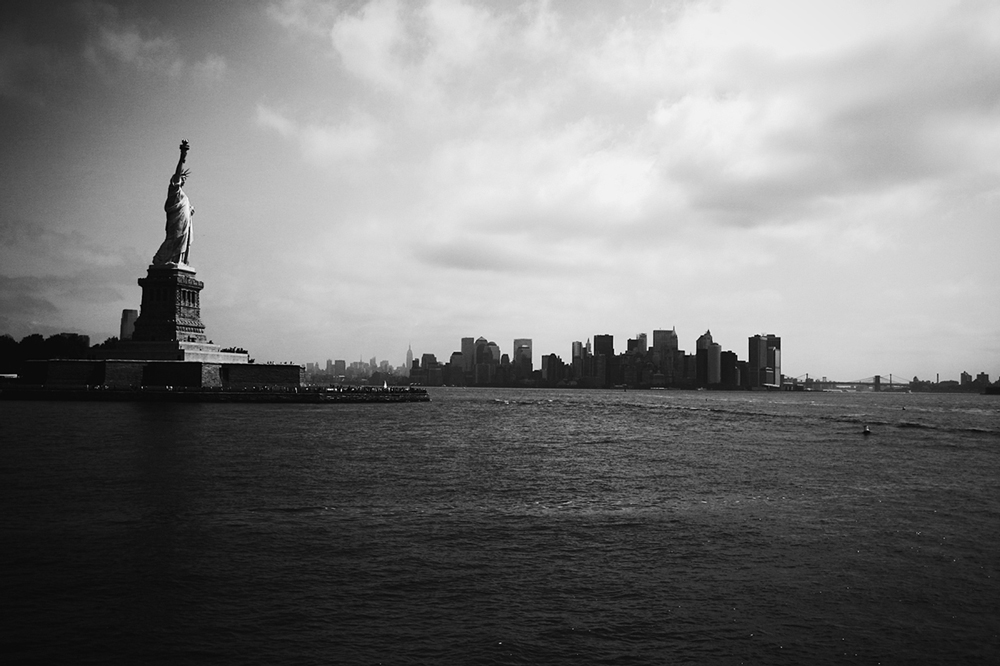
What does something need to have to make you want to take a photo of it? What do you look for before you snap it?
I try to look for something that can be seen differently than the way you would see it. Like, if you would look at this Sharpie, you look at it from your vision and I look at it from my angle. That’s what I do with the photo. Let’s say something is happening, I’m shooting a photo of a model – no, I don’t do that – of a friend. Let’s say I call out Johnny [Chang, The Hundreds’ videographer] and I shoot Johnny and you stand right behind me – you’re still not directly behind the lens. You’ll see it like, “Oh, you’re shooting Johnny.” But to me it’s like, “No, I’m shooting Johnny’s nose.”
It’s just a different perspective. I try to prove [people] wrong and show them that you can see something so simple and small and make it nice and reveal what it really is.
And then after you snap it, how do you know you got the photo you wanted?
Exactly what I was aiming for. This weekend I was in Washington and I was testing my friend’s eye because he doesn’t shoot like that. I was telling him, “Look, I’m going to shoot a photo of this person walking, but when you see the photo when it’s printed like a month from now, let me know the first thing you see.”
I got them developed out there the next day and I showed him the exact same photo without telling him and he’s like, “Oh, that’s a sick photo of the bridge.” I was like, “Nah. To you, you see the bridge, to me, I see the person.” The person’s right there and dead on in focus, the bridge is the blurry part and he sees the bridge. So just testing the way other people see my photos is pretty tight.
So it’s all about perspective then?
Yes. Everyone – my eyes to you.
::
“QUIET” is currently showing at eTc Tacoma Streetwear Boutique, located at 907 Pacific Ave (Tacoma, WA 98402) until November 15, 2014.
For inquiries please contact Umi at Etcetera907@gmail.com.

